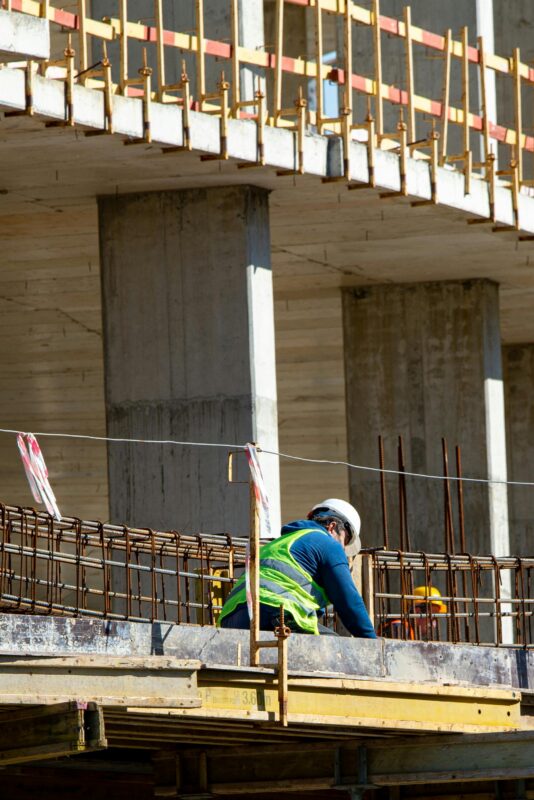Applications of Chemical Anchors in Reinforced Concrete Structures
- Structural Reinforcement
- Chemical anchors are widely used in reinforced concrete structures for embedding steel rods or rebars to improve the structure’s load-bearing capacity.
- Seismic Retrofitting
- In regions prone to earthquakes, chemical anchors play a crucial role in retrofitting and strengthening concrete structures to improve their seismic performance.
- Industrial Applications
- Chemical anchors are used to secure heavy machinery and equipment in industrial environments. These anchors provide superior resistance to dynamic loads and vibration.
- Bridge and Tunnel Construction
- Chemical anchors are used in construction projects where structural integrity is critical, such as in the installation of bridge bearings, tunnel linings, and large steel reinforcements.
Advantages of Using Chemical Anchors
- High Load-Bearing Capacity
- Chemical anchors provide superior bonding strength, ensuring that even high-tension applications remain stable and secure.
- Corrosion Resistance
- The use of specialized resins in chemical anchors provides long-lasting resistance to moisture and corrosion, making them ideal for outdoor and marine applications.
- Flexibility in Applications
- Whether it’s new construction or retrofitting an existing structure, chemical anchors can be applied in various situations, offering flexibility in both design and installation.
- Improved Durability
- Chemical anchors provide a strong, durable bond that can withstand environmental stress, chemical exposure, and mechanical vibrations over time.
- Suitable for Cracked and Uncracked Concrete
- Chemical anchors are versatile, offering reliable performance in both cracked and uncracked concrete, which is critical in seismic zones or areas with heavy load shifts.
How to Install Chemical Anchors
- Drill the Hole
- A proper hole size and depth must be drilled into the concrete using SDS MAX or SDS PLUS masonry drill bits, depending on the anchor size and application requirements.
- Clean the Hole
- Use heavy-duty nylon-steel hole brushes and industrial blow-out pumps to clean dust and debris, ensuring optimal adhesion between the anchor and concrete surface.
- Inject the Adhesive
- The chosen resin (epoxy, polyester, or hybrid) is then injected into the hole using caulking guns specifically designed for concrete epoxy.
- Insert the Anchor
- The anchor, typically a steel rod, rebar, or threaded rod, is placed into the filled hole, allowing the adhesive to bond.
- Curing
- Allow the adhesive to cure based on the manufacturer’s specifications, ensuring the bond is fully hardened before applying any load.
Choosing the Right Chemical Anchor for Your Application
When selecting the appropriate chemical anchor, consider the following factors:
- Load Requirements: Heavier loads and dynamic stresses require high-performance resins, such as epoxy or vinylester.
- Environmental Conditions: For corrosive or marine environments, vinylester and hybrid anchors provide better chemical resistance.
- Curing Time: If time is critical, polyester resin anchors may be the best option due to their fast curing times.
- Concrete Condition: Cracked vs. uncracked concrete plays a role in determining the type of resin and anchor to use.
Why Choose Our Chemical Anchors for Reinforced Concrete Structures?
At [Your Company Name], we offer a wide range of chemical anchoring solutions designed to meet the highest industry standards. Our chemical bolts and epoxy structural bolts are engineered for optimal performance in both standard and challenging environments, ensuring long-term stability, corrosion resistance, and maximum load capacity.
Our Chemical Anchor Products Include:
- Epoxy Chemical Anchors
- Vinylester Anchors
- Hybrid Resin Anchors
- Polyester Resin Anchors
We also provide specialized tools and accessories such as caulking guns, heavy-duty nylon-steel hole brushes, industrial blow-out pumps, and SDS MAX & SDS PLUS masonry drill bits to ensure seamless installation and maximum adhesion.
Conclusion
Chemical anchors are essential for ensuring the safety, stability, and longevity of reinforced concrete structures. Whether you’re looking to reinforce a new construction project or retrofit an existing structure, chemical anchors provide a versatile, high-performance solution that meets modern engineering standards.

